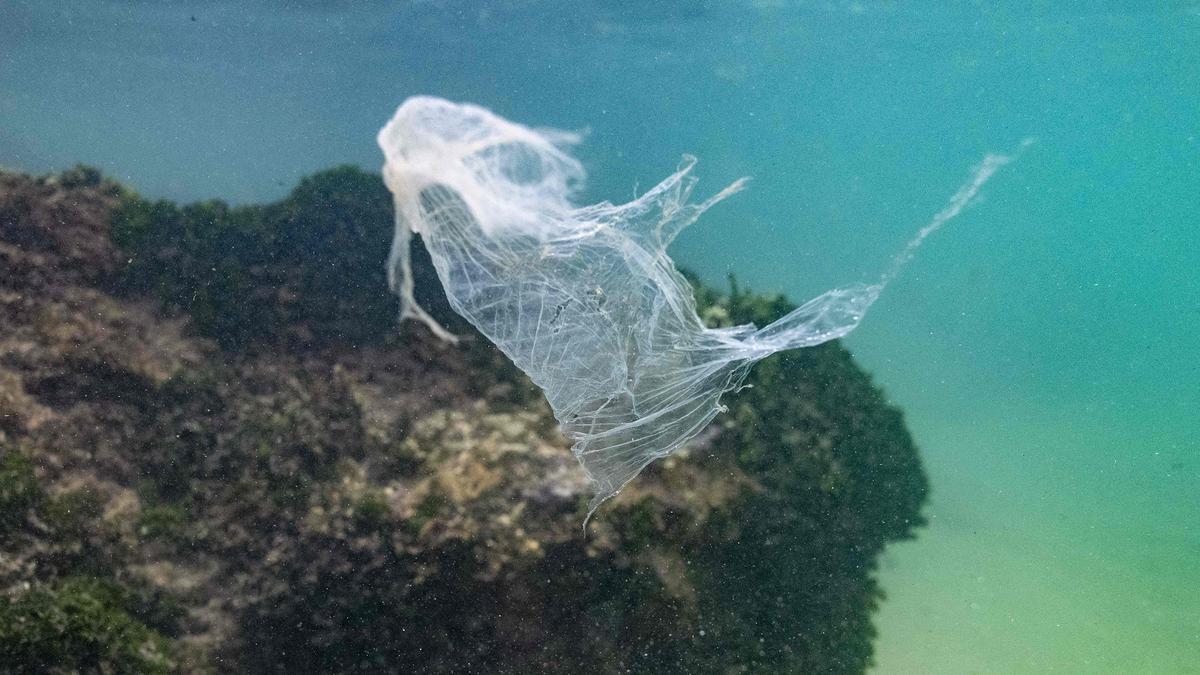- July 7, 2023
Explained | What are the provisions of the High Seas Treaty?

A plastic bag floats in the waters of the Indian Ocean near the town of Ahangama in Galle, Sri Lanka.
| Photo Credit: AFP
The story so far: On June 19, the UN adopted the Marine Biodiversity of Areas Beyond National Jurisdiction (BBNJ) or the High Seas Treaty. It became the third agreement to be approved under UNCLOS, after the 1994 and 1995 treaties, which established the International Seabed Authority and the Fish Stocks agreement.
When did the process start?
The idea of protecting the marine environment emerged in 2002. By 2008, the need for implementing an agreement was recognised, which led to the UNGA resolution in 2015 to form a Preparatory Committee to create the treaty. The Committee recommended the holding of intergovernmental conferences (IGC) and after five prolonged IGC negotiations, the treaty was adopted in 2023. The treaty’s objective is to implement international regulations to protect life in oceans beyond national jurisdiction through international cooperation.
What does the treaty entail?
The treaty aims to address critical issues such as the increasing sea surface temperatures, overexploitation of marine biodiversity, overfishing, coastal pollution, and unsustainable practices beyond national jurisdiction. The first step is establishing marine protected areas to protect oceans from human activities through a “three-quarterly majority vote,” which prevents the decision from getting blocked by one or two parties. On the fair sharing of benefits from marine genetic resources, the treaty mandates sharing of scientific information and monetary benefits through installing a “clear house mechanism.” Through the mechanism, information on marine protected areas, marine genetic resources, and “area-based management tools” will be open to access for all parties. This is to bring transparency and boost cooperation. The last pillar of the treaty is capacity building and marine technology. The Scientific and Technical Body will also play a significant role in environmental impact assessment. The body will be creating standards and guidelines for assessment procedures, and helping countries with less capacity in carrying out assessments. This will facilitate the conference of parties to trace future impacts, identify data gaps, and bring out research priorities.
Why did it take so long to sign?
The marine genetic resources issue was the treaty’s most contended element. The parties to the treaty must share and exchange information on marine protected areas and technical, scientific and area-based management tools to ensure open access of knowledge. The negotiations on the subject were prolonged due to the absence of a provision to monitor information sharing. In IGC-2, small island states supported the idea of having a licensing scheme for monitoring, but was opposed by the likes of the U.S., and Russia, stating its notification system would hinder “bioprospecting research.”
Another debate was over definition. The use of the phrases “promote” or “ensure” in different parts of the treaty, especially with respect to the sharing of benefits from marine genetic resources, was heavily debated over. And finally, there was the prolonged negotiation over the adjacency issue. This was specifically applicable to coastal states whose national jurisdictions over the seas may vary. This meant it required special provisions where it can exercise sovereign rights over seabed and subsoil in the jurisdiction beyond. It prolonged the decision-making as it affects the interests of landlocked and distant states.
Who opposed the treaty?
Many developed countries opposed the treaty as they stand by private entities which are at the forefront of advanced research and development in marine technology (patents relating to marine genetic resources are held by a small group of private companies). Russia and China also are not in favour of the treaty. Russia withdrew from the last stage of reaching a consensus in IGC-5, arguing that the treaty does not balance conservation and sustainability.
Padmashree Anandhan is a Research Associate at NIAS, Bengaluru




